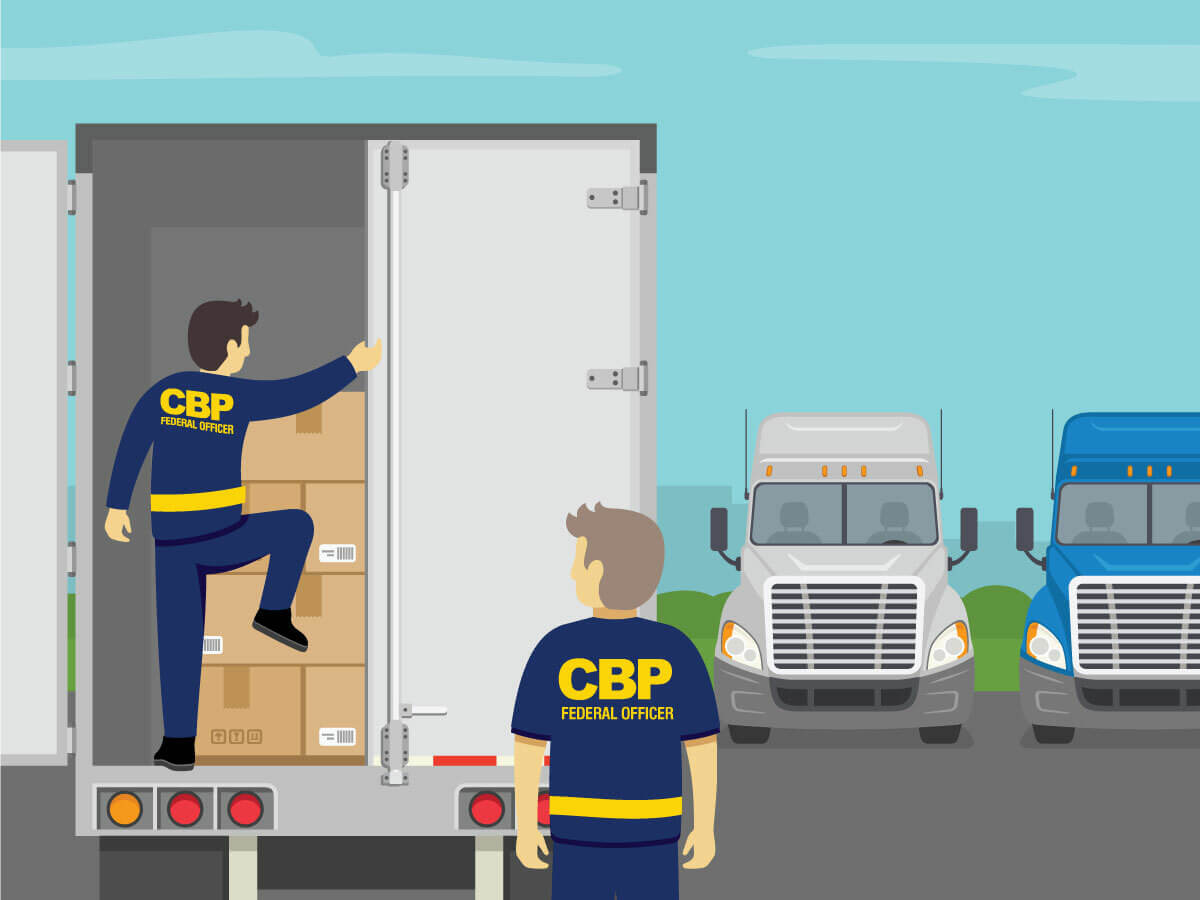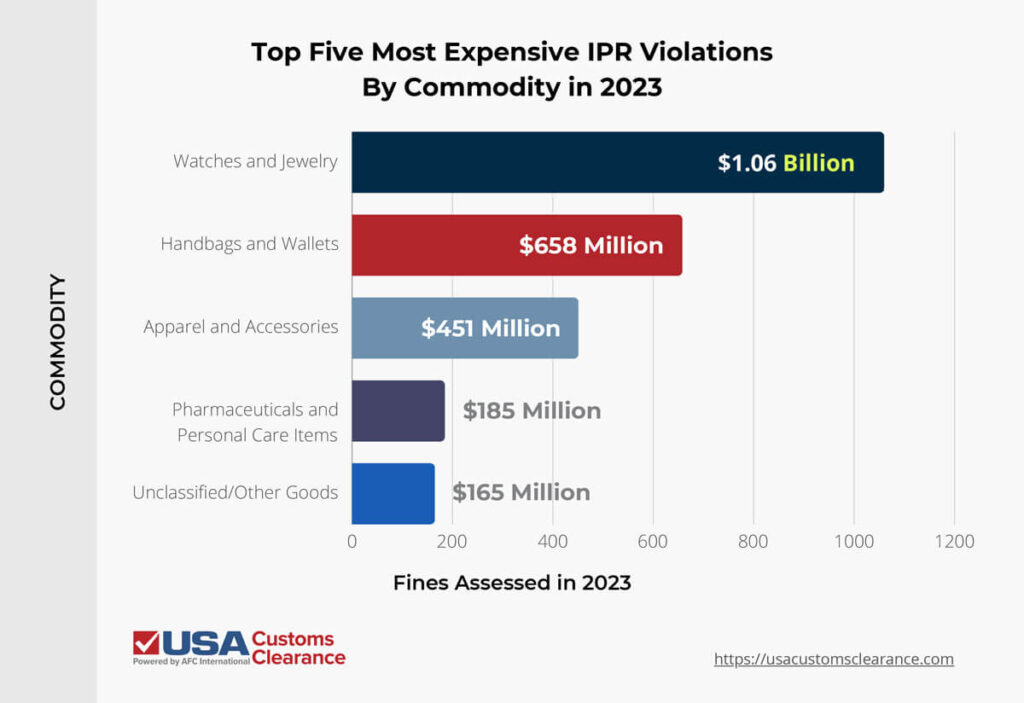
The United States Customs and Border Protection (CBP) occasionally holds shipments for examination. This is never good news for importers, and in some cases the exam could have been avoided.
Key Takeaways
Importers of all experience levels can benefit from this review of customs inspections, why they occur, and how to reduce the likelihood that your shipments will come under scrutiny from CBP.
This is a procedure CBP uses to ascertain potential violations of U.S. customs laws. Violations can range from relatively mundane issues, like improper paperwork, to dangerous situations, such as suspicion of illegal goods.
CBP uses this procedure in order to protect the country by monitoring what passes through the border. However, they cannot reasonably inspect every single shipment that comes through the border, so they look for certain risk factors to help determine which shipments to inspect more closely.
If your shipment is selected for examination, it doesn’t necessarily mean there is anything wrong with it. That said, you will have to wait longer to pick up your goods since customs will hold it for several days at the port.
Related: Customs Hold Types and Their Impact on Your Shipments
CBP has an algorithm they use to rate incoming shipments by their level of risk, and select some to inspect. The public doesn’t know exactly which factors are included in this algorithm, and some shipments that have been correctly valued and documented still get selected for examination.
There are a few circumstances that can drastically increase the likelihood of your shipment being inspected. Some of these include:
If a shipment is selected for this procedure, it will be subject to one or more specific processes by CBP.

Worried about the Strict Regulations? Ask Our Experts.
Our Licensed Expert Consulting Will Personally Guide You.
The first thing that happens is the shipper is notified that their shipment has been selected for examination by CBP. This notification can come directly to you or be relayed by your customs broker.
The shipment is either held at the port of entry or, for more intensive procedures, transported to a Centralized Examination Station (CES). There, it waits in a queue of other shipments, which can sometimes take days for customs workers to get through.
When the customs officers conduct the exam, they might have to break the seal on the container or unload it entirely. If the shipment is found to be compliant with all applicable regulations, it is reloaded and cleared to pass through into the U.S. with no further action needed.
However, if a shipment doesn’t pass, CBP can take a number of actions, including assessing a fine. This is a common measure, particularly on shipments of goods that violate intellectual property rights (IPR). In fact, this relatively benign violation costs importers millions of dollars a year, as you can see in the table below.

Source: cbp.gov
If that doesn’t sound bad enough, every aspect of the process has to be paid for by the shipper. This is just another reason to do everything you can to avoid attracting CBP’s scrutiny. It’s also worth noting that even if a shipment does initially pass customs, CBP reserves the right to request redelivery of the shipment for an exam up to 180 days after the fact.
I mentioned before that there are some inspections that require moving the shipment to a CES. There are three different kinds of examinations that your shipment could undergo, depending on how suspicious it appears to CBP. Each test varies in invasiveness, with the most invasive one also being the most expensive and time-consuming.
If your cargo is randomly selected, and there isn’t really anything wrong with it, then it will likely be examined in the most non-invasive way. However, if one of the less invasive tests comes back with inconclusive or concerning results, it can be escalated to a more intensive process.
From least to most invasive, the three types of inspections are:
Your shipping container is X-rayed to determine if there is anything inside that doesn’t match the cargo manifest. It may also be tested for radiation or signs of pests, but the container itself won't be opened if no problems are detected.
Because of its non-invasive nature, this is usually less costly to the shipper than the other two types. Unless there is a large backlog of shipments that need to be examined, you can expect your freight to get through in about two to three days.
The customs workers break the seal on the shipping container to physically examine the cargo. This doesn’t involve actually touching the cargo at all, but the process is still more intensive than the first type.
Even though they sound simple, Tail Gate exams can end up costing you more than a VACIS/NII. It will also take your shipment longer to be processed, usually four to five days. This is often a precursor to an Intensive Exam.
This involves completely unloading the entire shipment at a CES to examine everything up-close. After all the cargo has been thoroughly inspected, CBP officers reload the shipping container.
As you can probably imagine, this process is expensive. If your shipment triggers this level of inspection, you’ll be stuck with the bill for transportation of your cargo to and from a CES, along with the labor involved in unloading and loading the shipment. Costs could be in the thousands of dollars, and you’ll have to wait at least a week before your shipment is released.
Unfortunately, there isn’t much you can do if your shipment is selected for an exam. However, there are some preparations you can make for the possibility of such an occurrence before your shipment even leaves its country of origin.
Since an intensive inspection can result in your freight getting damaged, it’s a good idea to invest in cargo insurance that can help you recoup some losses.
You can also work with a customs broker to reduce the risk of your shipment getting selected for in the first place. They can help you communicate with customs and keep you updated on the progress of an examination, should one occur.
No matter how careful you are, there is always a chance that your shipment will get selected for examination. However, if you take all the right steps, you can significantly reduce that chance.
Here are some of the best ways to stay under CBP’s radar and get your shipments through customs quickly.
Some exams are inevitable, but by showing CBP that you are a reliable importer, your risk will decrease naturally over time.
Finding out your shipment is being examined by CBP is never good news, and working with experts in U.S. customs can minimize the chance of such an occurrence. That’s where we come in.
The brokers at USA Customs Clearance have decades of experience helping importers avoid mistakes that can lead to cargo exams. We’re also CTPAT certified, giving you a leg up when it comes to building the trust necessary to clear customs smoothly.
Additionally, we offer services such as:
Set yourself up for a successful import transaction by contacting us online or giving us a call at (855) 912-0406. We have the know-how to help you avoid unnecessary customs exams.
 Copy URL to Clipboard
Copy URL to Clipboard

Google is changing how it surfaces content. Prioritize our high-quality guides and industry-leading coverage in search results by setting usacustomsclearance.com as a preferred source.
had a container clear customs last week, the broker (Fed ex logistics) then had it picked up and deliver to our warehouse this past thursday. Broker recieved call today from CBP saying "they released it by mistake , container was not supposed to clear and now want to know if we have all the material to be returned - which we dont.